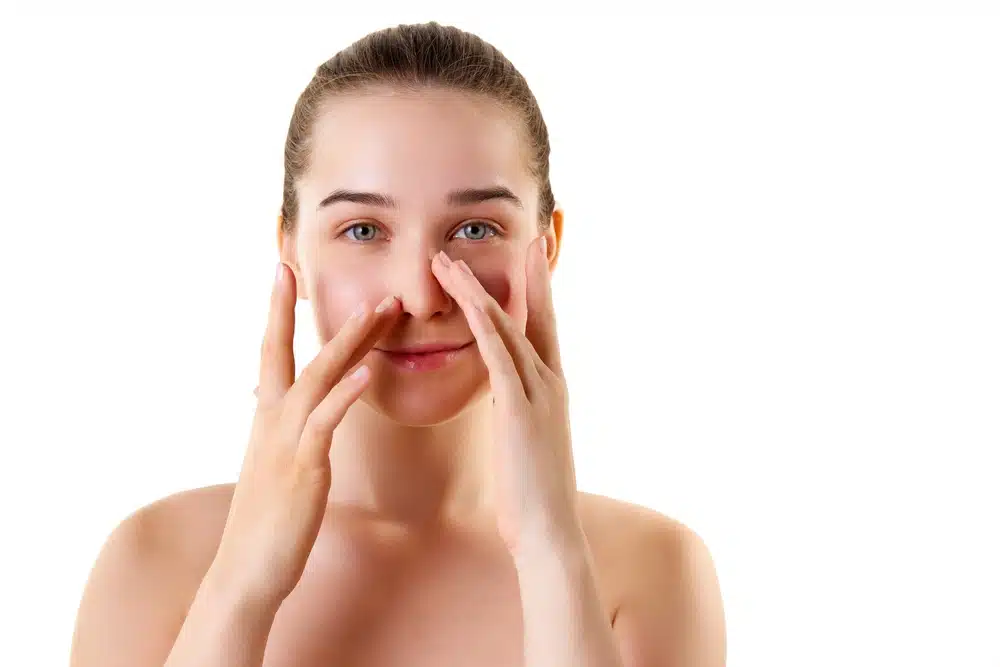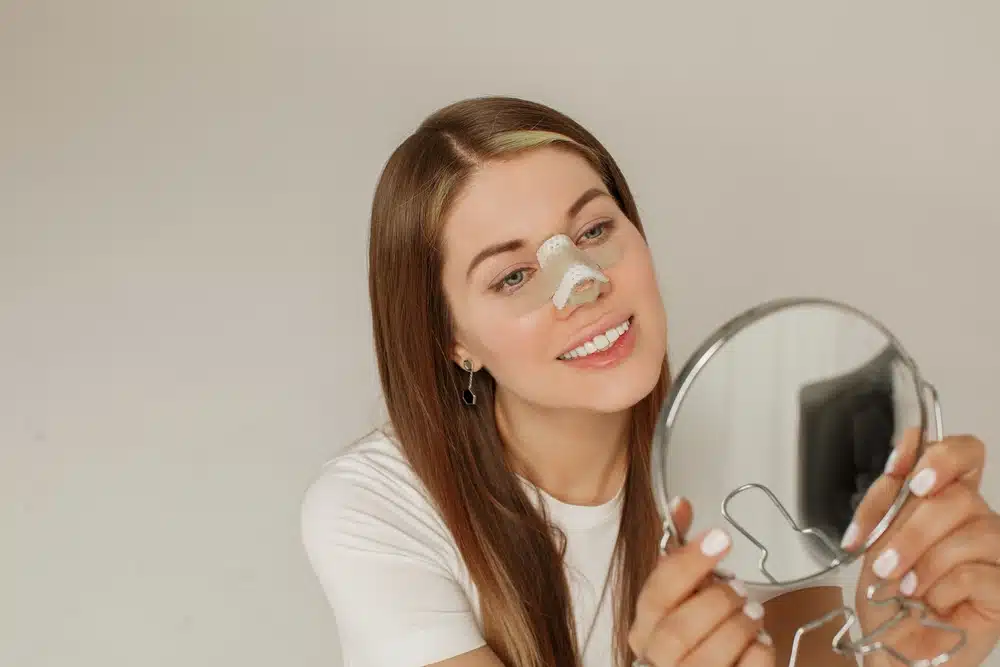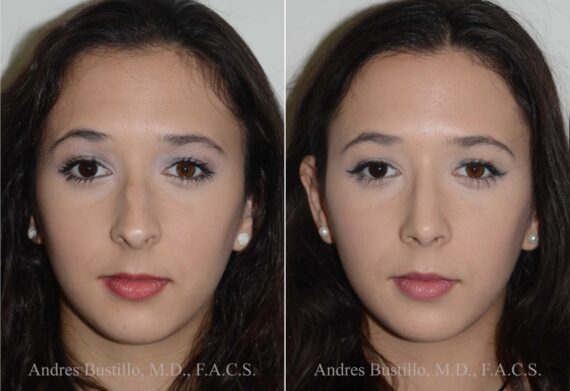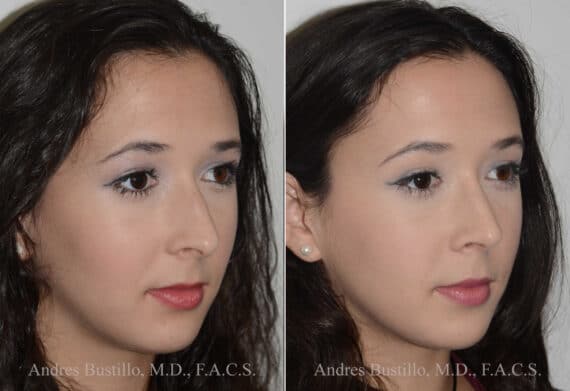Worried about scars from your nose job messing with your perfect look? Dr. Andres Bustillo, a top expert in cosmetic surgery, brings unmatched know-how to help you heal and minimize those post-surgery scars. He covers it all—from early care right after your surgery to advanced scar treatments. With his guidance on effective rhinoplasty scar management , you can feel confident and well-prepared for your recovery.
While implementing focused techniques can greatly improve the result, one must first understand the realities of scar growth. Aiming to help patients through a journey as much psychological as it is physical, Dr. Bustillo’s observations highlight the value of elements including nutrition, sun protection, and professional advice.

Managing Scars from Your New Nose
Rhinoplasty scars, although typically well-hidden, can still be a concern for individuals undergoing this surgical procedure. While the goal of rhinoplasty is to reshape and enhance the nose’s appearance, it’s important to understand that some visible scar tissue may be inevitable.
The visibility and appearance of these scars can vary depending on factors such as the incision technique used, the individual healing process, and the skill of the surgeon. However, with proper post-operative care and adherence to scar management strategies, patients can greatly minimize the appearance of these scars over time.
Types of Rhinoplasty Procedures and Their Scarring Potential
Rhinoplasty can be performed using two main surgical approaches:
Closed Rhinoplasty
- Incisions are placed inside the nostrils.
- Scarring: No visible external scars.
- Best for: Minor nose reshaping.
Open Rhinoplasty
- A small incision is made on the columella (the skin between the nostrils).
- Scarring: A faint scar may be visible, but it usually fades.
- Best for: Complex reshaping or revision procedures.
🔍 Did you know? Studies indicate that with proper post-op care, over 90% of open rhinoplasty scars become nearly invisible within a year.

Factors That Impact Scar Development
Several factors contribute to the final appearance of rhinoplasty scars:
- Thick or oily skin may hide scars better.
- Patients prone to keloids or hypertrophic scars may require special treatment.
- An experienced plastic surgeon uses fine sutures and careful incision placement to minimize scarring.
- Poor technique may result in wider or more noticeable scars.
- Following your surgeon’s wound care instructions is critical.
- Skipping aftercare steps (like sun protection) can cause scars to darken.
📢 Expert Tip: Patients who follow post-op guidelines reduce their visible scar risk by up to 50%.
Best Practices for Scar Reduction
1. Immediate Post-Op Care
During the first few weeks, proper care ensures optimal healing:
✔️ Keep your head elevated to reduce swelling.
✔️ Avoid touching or applying pressure to your nose.
✔️ Keep incisions clean and dry to prevent infection.
2. Medications and Topical Treatments
Your surgeon may recommend:
- Silicone gel or sheets – Scientifically proven to reduce scar thickness.
- Vitamin E or onion extract creams – Helps soften scar tissue.
- Corticosteroid injections – For raised or keloid-prone scars.
👨⚕️ Medical Insight: A study in Plastic & Reconstructive Surgery found that silicone-based treatments reduced scar visibility in 85% of patients.
3. Nutrition for Faster Healing
Did you know that your diet plays a role in scar healing? Focus on: 🥦 Vitamin C – Boosts collagen production (found in citrus, bell peppers).
🥩 Zinc – Speeds up tissue regeneration (found in nuts, seeds, lean meats).
🧈 Vitamin A – Promotes skin repair (found in carrots, sweet potatoes).
🚫 Avoid: Processed sugars, excessive caffeine, and alcohol, which can slow down skin repair.
4. Foods to Avoid During Recovery
While some foods aid in healing, others may impede it. Patients are advised to steer clear of:
- High-sugar foods, which can inflame skin and slow the repair process.
- Saturated fats that may decrease collagen production.
- Excessive caffeine and alcohol, as they can dehydrate skin and delay wound healing.
Questions about your procedure?
Schedule a consultation with Dr. Andres Bustillo.
Why Sun Protection Can’t Be Overlooked
Choosing the right sunscreen for post-surgery skin is crucial in maintaining the integrity of the healing process. Patients need a product that guards effectively against both UVA and UVB rays. A broad-spectrum sunscreen with an SPF of 30 or higher, which is also gentle on sensitive skin, will help protect the scar from becoming more visible.
Sun exposure guidelines for new scars are imperative for those recovering from rhinoplasty. Exposure to sunlight can not only increase swelling but also worsen the appearance of scars. Strict adherence to these guidelines ensures that new scars do not darken or become more noticeable:
- Always cover the scar with a strong SPF sunscreen.
- Limit direct sun exposure, especially during peak hours.
- Wear a protective hat when outdoors to shield the skin.
The Benefits of Professional Scar Management
Professional scar management provided by experienced plastic surgeons or facial plastic surgeons can offer numerous benefits for patients with surgical scars. These professionals have the expertise and knowledge to assess the individual patient’s scar tissue and develop personalized treatment plans to optimize healing and minimize visible scarring.
During the initial consultation, they can evaluate the surgical incision and discuss various techniques and treatments that can improve the appearance of scar tissue, such as laser therapy, silicone sheets or gels, corticosteroid injections, or even scar revision surgery if necessary. By seeking professional scar management, patients can ensure that they receive the most effective interventions to enhance their overall aesthetic outcome after rhinoplasty or any other surgical procedure.

Typical Healing Timeline for Rhinoplasty Scars
After rhinoplasty, scar tissue forms beneath the skin as a natural part of the healing process. Initially, these scars may seem prominent, but with time, they typically fade significantly. The recovery time following rhinoplasty can be broken down into stages:
Patients will see the most significant changes. Swelling and bruising are common, and external incisions begin to heal. During this period of time, the scar is usually red and noticeable.
First 2 Weeks After Surgery
The scar matures and starts to soften. Incisions should be fully closed, with scar tissue gradually blending into the surrounding skin.
1 to 3 Months Post-Op
The healing process continues as the scar becomes less red and starts to lighten, although it can still be slightly raised or bumpy to the touch.
3 to 6 Months Afterward
This is when scars often reach their final appearance. They have typically faded and flattened out, becoming less conspicuous. Patience is key, as the scar may continue to improve subtly over time, even after the first year.
After 1 Year
Lifestyle Adjustments to Enhance Scar Fading
Smoking and Alcohol: Impact on Scar Healing
After rhinoplasty surgery, patients must understand the importance of avoiding smoking and alcohol consumption. Both have detrimental effects on the body’s healing process. Smoking decreases blood flow, starving the healing scar of necessary oxygen and nutrients. Alcohol, on the other hand, can cause inflammation and dehydration, impeding the skin’s natural repair mechanisms. Eliminating these habits is crucial for a smooth and quick recovery.
Exercise and Sleep: Their Role in Skin Health
Integrating beneficial lifestyle habits such as regular exercise and sufficient sleep is also pivotal for patients during the scar-healing phase. Exercise boosts circulation, which in turn promotes skin health and aids in the recovery process. However, it’s important to avoid strenuous activity that could stress the surgical site. Adequate sleep, conversely, allows the body to repair itself effectively. A good night’s rest is a non-negotiable aspect of postoperative care, particularly for those with sensitive skin types seeking optimal scar healing.
Key Takeaways in Managing Rhinoplasty Scars
Proper scar management after a nose job is crucial to the healing process. Your surgeon’s expertise in rhinoplasty surgery techniques plays a fundamental role in minimizing the visibility of scars. Follow their guidance for optimal skin care and scar treatment. An effective solution often includes:
- Gentle cleaning and moisturization of the skin
- Application of recommended scar treatments or silicone sheets
- Sun protection to prevent darkening of the scar area
Scar maturation is a time-intensive process that will help you set realistic expectations for your rhinoplasty recovery.
The importance of expert guidance cannot be overstated. Dr. Andres Bustillo is well-versed in the subtleties of facial aesthetics and scar management. Through personalized care and a commitment to excellence, he ensures the best healing outcomes for each patient.
Take the next step toward a seamless recovery and impressive results. Schedule a consultation with Dr. Andres Bustillo and tap into his wealth of knowledge and advanced techniques to minimize and manage your rhinoplasty scars effectively. Your confidence is just an appointment away.




